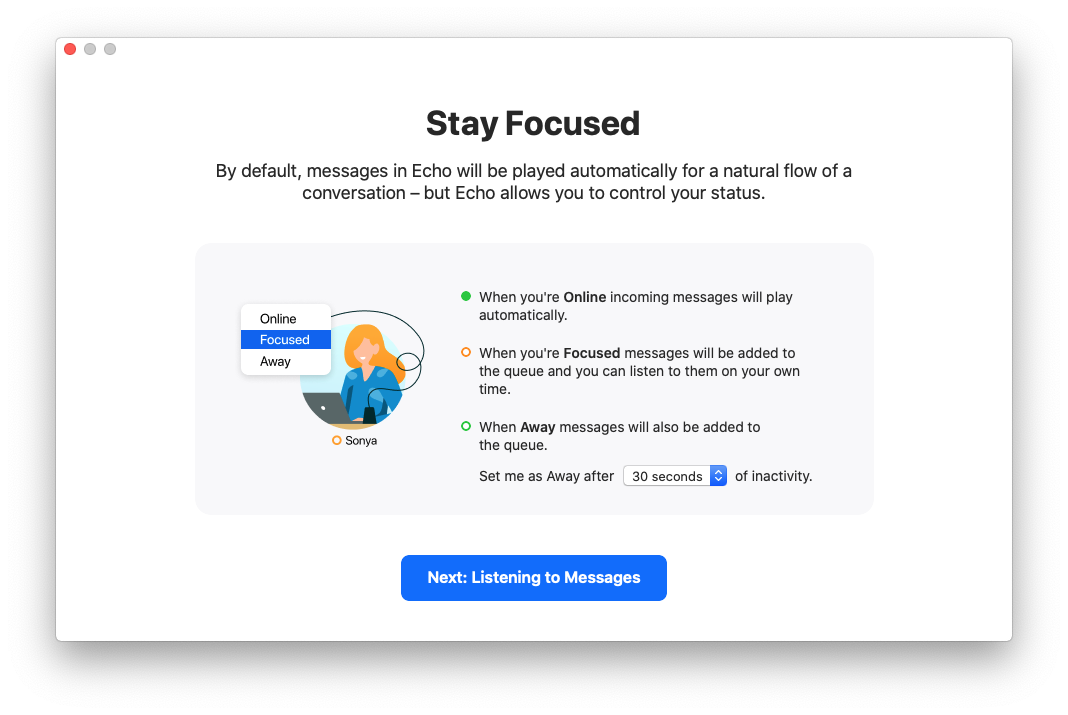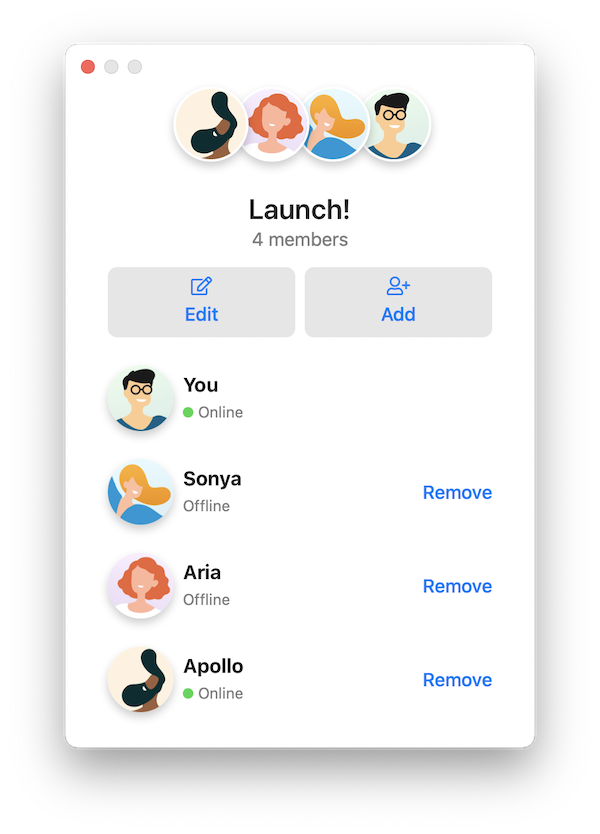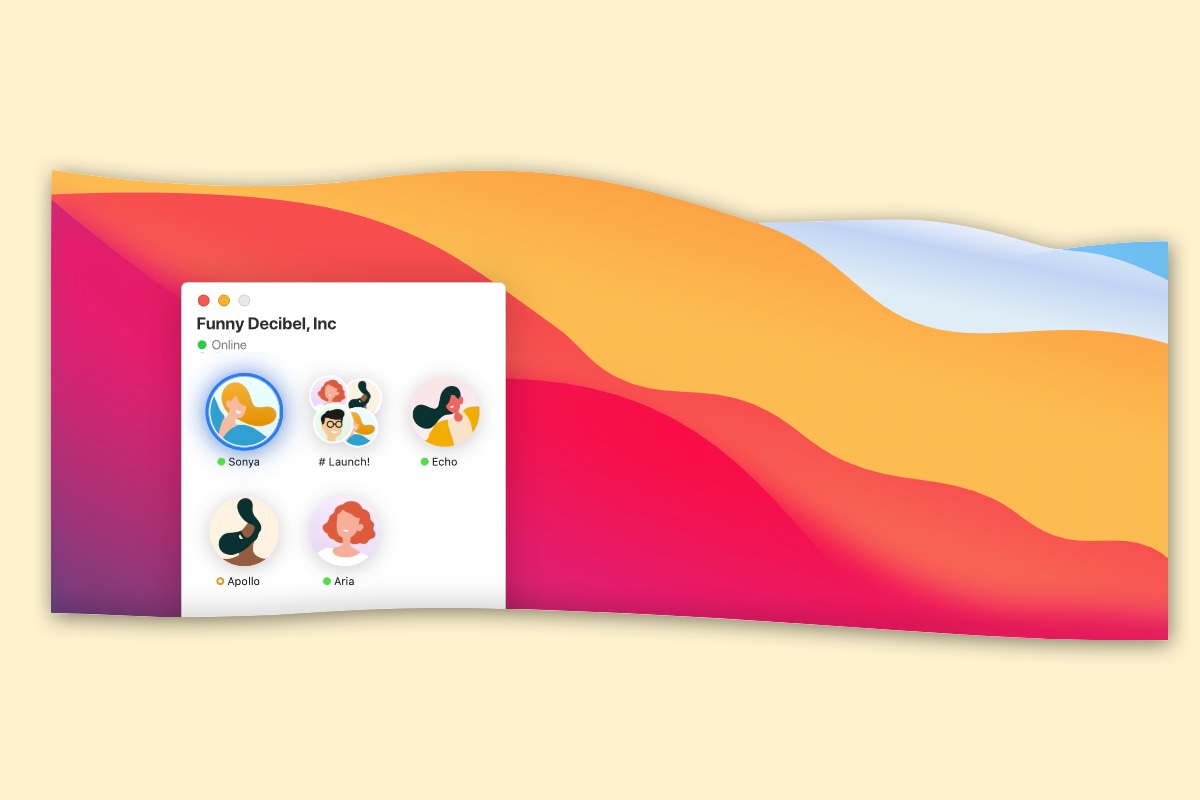Asynchronous ways of communication are taking over the remote workplace. They work across timezones and without knowing whether your counterpart is at their desk or not. What used to be a text-domain is now slowly being conquered by audio and video tools.
Echo is one of the tools that are looking to change the way we think about asynchronous communication. While asynchronous communication is usually perceived as an accurate, yet slow and laborious medium, Echo seems more seamless and natural than some of its synchronous counterparts.
Choosing audio as an asynchronous medium
Voice notes are nothing new. It all started with answering machines throughout the 1900s. It enabled any household to turn phone calls – a medium that usually only works with both parties connected – into a communication system that allowed people to receive and react to calls on their schedules.
A few decades later, we can receive audio notes at any time through our phones. We have virtual answering machines and voicen otes on many popular messaging services to the point where a call is not even needed anymore – it's not uncommon to exclusively community through async audio notes.
In the workplace, that development isn't just as far yet. We depend on e-mails, love to meet face-to-face, have Zoom calls or talk to each other over instant messaging. In the meantime, a natural part of working together and meaningful collaboration is being lost. Echo, is looking to change that. Kyryl, CEO of Echo, explains their vision behind Echo as follows:
"We see Echo in the middle between Slack and Zoom. We're trying to get rid of the problem of having to type too much and then having to say 'Hey, let's jump on a call'. Slack will continue to be useful for whenever people need to bring the whole team or a channel on the same page"
He is not alone with that opinion. Echo is just one of many young apps looking to make a dent in the remote work communication space using audio. It's no coincidence: Audio makes it easier and more spontaneous to have a conversion. It allows us to put a joke in-between the lines, conduct emotions in the purest way possible, all without the need to turn on the webcam or type out long sentences. In many ways, it's a missing piece in remote work collaboration.
Clear, straightforward user experience
The concept of Echo is clear and easily explained: It's a space for your team to instantly send voice messages to each other with a single click. Voice messages pop up immediately on the other side after they have been sent and are ready to be played on-demand if you are currently focusing on work or are away from the keyboard.
One thing that immediately sticks out with Echo is the no-noise setup and user experience. As a potential customer, I can create my workspace and onboard my team on it in less than a minute. There's no fluff, no extensive onboarding I need to go through, I just create my private space, download the client and am running.
The clear and un-convoluted experience is also clear to see in the core experience and the client. I only see my co-workers and the in-house bot "Echo" that helps me make sure my setup is working and not much more. If I have an unread message, the bubble has a blue ring around it and if not, I don't need notifications or read indicators to tell me so.

As I'm finding my way around the app, I get a little notification tone, followed by Kyryl's voice: "Hey Dominic, hope you are doing well". It feels natural to reply and record a few seconds, something I wouldn't have necessarily done on camera at that moment in the night. We talk a bit, but it's getting late. I'm going to follow up on the next few messages tomorrow. Echo allows me to do that without issues.
Throughout this review, I was able to send Kyryl's more questions about the tool, bringing forward my thoughts and admiration for the clean work. According to Kyryl, the use cases of the tool are not limited to watercooler conversations or banter between co-workers:
"When we worked closely together, I'd spend the day on a Zoom call with my designer or engineer and for the majority of it we'd be on mute and we'd just talk when something came up. That's useless. So we transitioned to using the early stages of Echo and immediately stopped having those calls. It's just a lot closer to sitting next to each other and going 'Hey, have a look at this'. It's all in the app"
It feels obvious that audio messaging fills the gap between text and video. It's a medium that allows us to talk on the go, that allows us to both explain deep concepts but also convey emotions and have a laugh on.
However, I am surprised at how easy it is to drag me out of the moment and get to talk to me. As an introverted long-time remote worker, the digital shoulder tap is almost too real. Echo has got my back there too, with compelling and simple status controls that allow me to keep conversations in the background until I am ready for them. Furthermore, Echo allows people to "ping" each other using emojis for all those situations where you just need to clear up whether someones around.

Of course, for a large amount of newly minted remote workers, the digital shoulder tap is exactly what they are looking for. Asynchronous communication can be slow. Even worse, it can be isolating coming from the traditional open floor office plan to the lonely home office. Having the people you want to talk with near to you and accessible, while also maintaining a bit of privacy over the increasinly popular always-on Zoom calls is the mix that so many are looking for and need.
Even though it sounds and looks very close to synchronous communication channels, long-standing fully remote and async-first companies shouldn't dismiss the Echo project. In companies that struggle with building remote culture, it could be a true lifesaver. Using shared channels instead of 1-on-1 conversations, it's also an incredible tool to put a group of people or even your whole team on the same page. Especially in teams where all-hand meetings are impractical due to timezone differences or different schedules, having a audio-enabled group channel is the perfect tool to keep everyone in the loop and see where everyone stands in the conversation, thanks to listen receipts.
How async audio can change the workplace
Echo is one of the pioneers of bringing async audio into the workplace. On their way of doing so, they take a refreshing and incredibly straightforward path. But what role will tools like Echo and Yac have in the market?
The clear benefit of having audio as an async medium is that people can respond on their own time and wrap up a message that would otherwise take 10 minutes to type out in a 2-minute voice note. According to Kyryl, there are more hidden benefits as well.
"Using Echo for a while has made us all being better listeners. There's just no other choice than to sit through the whole message, digest it and then think of a reply, it really changes how we talk to each other."
As a user of async-first communication tools, I have to wonder: does this scale? After all, audio notes are lost after a while. The great thing about putting things in writing is that they are searchable forever. If someone comes into a new team, they can get the full context right away with a few text searches. For Echo, this is an uphill battle, but one that they are taking on heads-first.
"We are a piece in a bigger puzzle. When it comes to long-form retainable communication, Slack or Email are still a great medium to do so. There's a need for voice and conversations to be indexed, searchable and listenable, even after a year or more and its our job to fill that need as a piece of the puzzle. We are looking at and using private voice recognition to provide that, even if it still has some way to go."
The key element of Echo is that it manages to make audio retrievable. As Kyryl and I conduct this interview, we send audio messages back and forth. A couple days later, as I am writing this piece, I am able to look over our history, find different bits and pieces through the voice recognition and am able to listen back to our conversation a few days prior.

In any case, we are a big fan of the incredibly easy usage of Echo and hope for it to have a long future in many remote teams. The start of that is just beginning: Echo is now finally available for macOS and iOS users with other platforms following soon.

